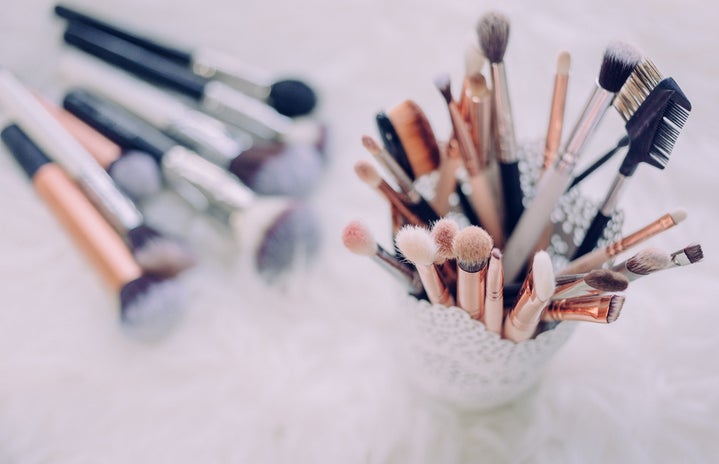As a self/YouTube taught makeup and beauty enthusiast, I spent most of my teenager and now young adult life being a part of the beauty community in some way. While I will never be a beauty guru on YouTube with millions of followers or have the skills to become a professional makeup artist, I am still invested in this community. I love the artistry and relaxation that comes from doing my makeup and the confidence I gain from it. In 2019, cosmetics, beauty, and skincare were valued as a $532 billion industry, but how will the current state of the world impact this thriving sector?
The rise of YouTube and Instagram is largely credited for the massive and sustained rise of beauty and consumerism. Popular YouTubers, viewers, and business moguls spent lots of money on makeup and thus, lots of makeup was made. 2016, especially in the online beauty community is regarded as the year where makeup and beauty exploded both online and in retail (see videos created by RawBeautyKristi, Thomas Halbert, and Jackie Aina discussing this topic). Beauty trends also reflected this surge in consumerism – matte, full coverage skin, matte liquid lipsticks, and cut-crease eyeshadow looks complete with winged liner and false lashes were in. The rise of the eyeshadow palette also skyrocketed; consumers were buying full “concept” driven palettes. They had color stories, full pigmentation, and beautiful packaging, all at different price ranges. While the trends in beauty have completely shifted since 2016, the industry has continued to boom, nonetheless.
However, with economic uncertainty and unemployment on the rise, the makeup community is already seeing the ramifications of these impacts. People are not spending as much time watching beauty related content, and thus this is most likely translating (or will eventually) into less money. What will the makeup industry look like in a post-pandemic world? Beauty trends were already shifting to more natural, dewy, Glossier inspired makeup, a dramatic difference from just a few years ago. My personal prediction, and the trend already emerging, is that money will instead be spent on skincare instead of makeup, and skincare inspired makeup. Instead of the heavy, full coverage looks that were made accessible by economic prosperity in the United States, less product, glowy skin, and skincare focused products are on the rise. The overall industry in my opinion, will still be sustained. While trends and products are shifting, content creators will have to shift the content they create based on consumer interest. This is not a new idea – ten years ago on YouTube full makeup tutorials and “What’s in my Bag?” videos were popular and racked millions of views. This did not last forever, and as years passed so did the content created because of what viewers wanted to see. Instead of makeup tutorials, “Get Ready with Me” videos became popular, and then product reviews and ranked product “listicles”.
While beauty has continuously changed over the years, this event in history will have an obvious impact on it. In my unprofessional opinion, I think it will obviously survive (come on, $542 BILLION?). But this event will still undoubtedly change our trends, how we shop, and what we buy. Maybe this’ll be a good thing, in the end – and please, makeup brands: stop pushing new palettes and products every month. Our wallets (and minds) can’t take it anymore.


